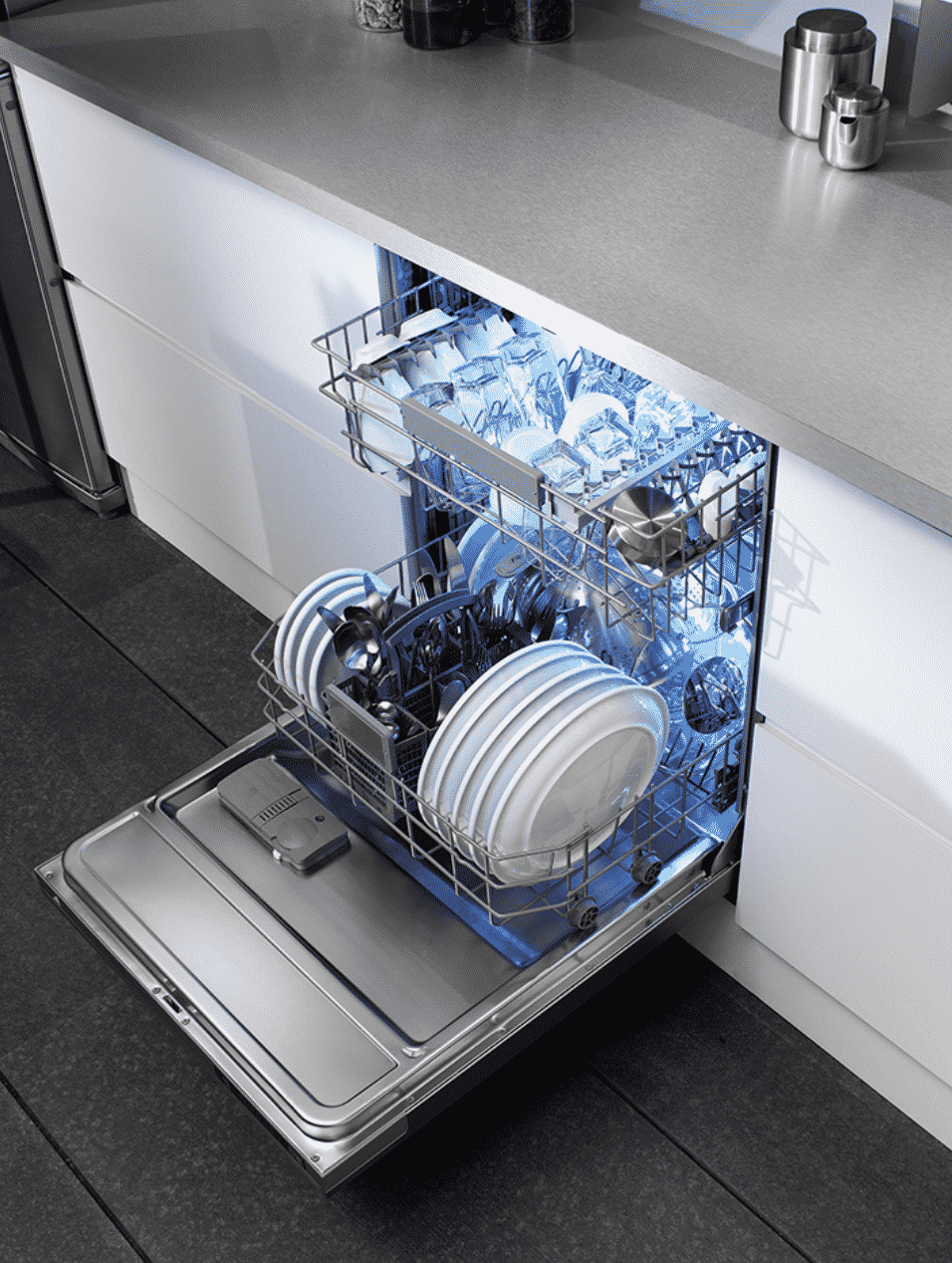Most people load their dishwasher in one of two ways. Some people have rules about the way they load everything from coffee mugs to butter knives. Others just place the items into their dishwasher randomly. If you don’t have a specific way of loading your dishwasher, you might wonder which method is best.
Here are some tips that can help you discover the method that works best for loading your dishwasher.
How to Load the Dishwasher
There are some things you need to keep in mind when learning the method of dishwasher loading would work best for you and your machine.
Each dishwasher brand has different internal workings and racks. Because of this difference, you need to create a unique loading pattern based on your particular model of dishwasher. Consult the owner’s manual for the manufacturer’s instructions to ensure you’re getting an effective cleaning.
Pre-rinse the dishes that you place in the dishwasher. Then you can wait until the dishwasher is filled before running a cycle.
Some items should never go in the dishwasher. Cast iron cookware cannot be washed in the machine. Learn about dishwasher taboos before placing an item in the dishwasher. You can check on item packaging to know to best wash the item. You can also read Look Before You Load: What Not to Put in the Dishwasher.
Don’t stack dishes in the dishwasher since stacking can prevent the sprayer from reaching all surfaces.
Make sure to secure plastic items since they can be knocked loose during the cycle. If the plastics are unsettled, they may melt if they are too close to the heating element.
Don’t crowd the dishwasher because this can lead to the dishes not being washed effectively and may cause the dishes to break.
Loading Silverware in a Dishwasher
Many people don’t know there is a specific way to load silverware into a dishwasher. Many people would just drop the silverware into the dishwasher.
If possible, separate the spooks, forks, and knives so that they don’t nest. You can also keep them from nesting by loading some of the spoons and forks with the handles facing down. Knives should be loaded with the handles up so that you don’t risk cutting yourself when unloading your dishes.
Stainless steel and silver-plated utensils should be kept separate to prevent damage.
How to Load Large Items
Most people know that they should put larger dishes, like casserole dishes, mixing bowls, plates, and baking sheets should be loaded on the bottom rack. However, there are some other things that you might not be aware of.
The largest items should be placed on the sides or back of the dishwasher to allow water to circulate more evenly.
Load the dishes so that the dirty side of the item faces the sprayer.
Ensure there is space between larger items so that they can be cleaned properly.
Don’t assume that large or metal items are all dishwasher safe. Non-stick pans and pots should be hand-washed. Consult the care instructions for your cookware before washing these items.
Loading Smaller Items in Your Dishwasher
You may be aware that smaller items, including glasses, small bowls, and coffee mugs, go on the top rack of your dishwasher. Here are some extra tips that can help you make the most of your dishwasher.
Items should be placed between the tines of the rack, rather than placed on top of them, so you don’t get water spots.
Load mugs and cups on an angle. The inside of the cup should face the sprayer to reduce the amount of pooling.
Unload the bottom rack first to ensure liquids that have puddled in mugs or cups don’t splash down onto clean dishes.
Don’t use the dishwasher for cleaning wine glasses, since the delicate stems and globes can break easily.
Plastic storage containers and other plastic items should be placed on the top rack so that they are not near the heating element which can cause buckling and warping.
Now that you can load a dishwasher properly, you may be interested in how to keep your dishwasher functioning properly. It’s important to clean your dishwasher properly so that your dishes always come out shiny and clean.
Our housekeeping professionals know the most effective techniques and practices for cleaning every area of your home. Contact us if you need help with your routine weekly cleaning or one-time cleaning assistance for a special occasion.

Leave a Reply